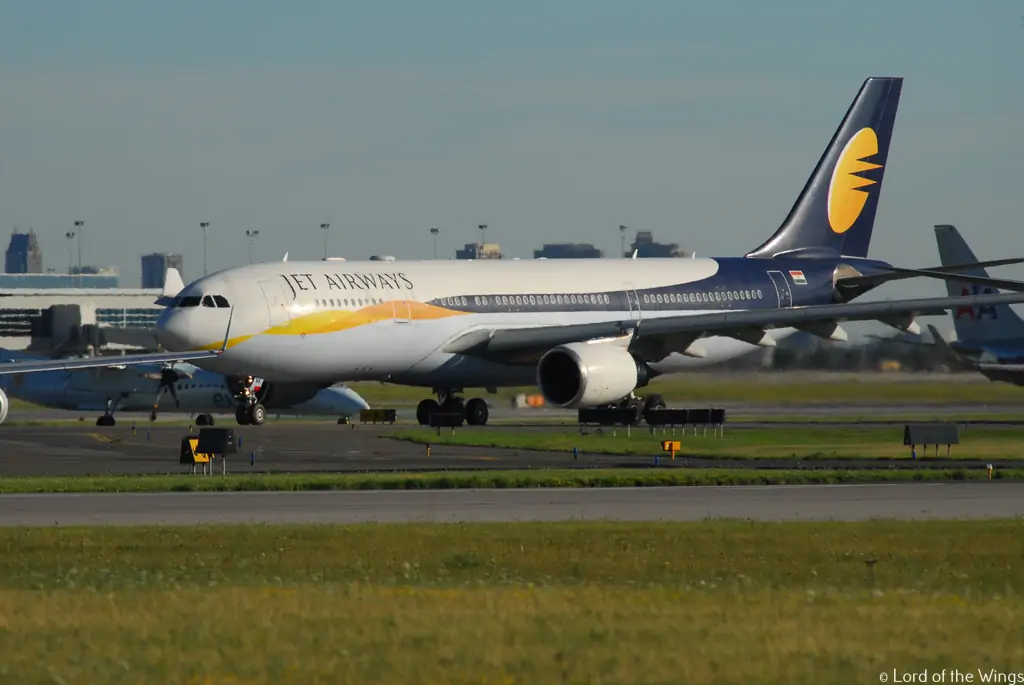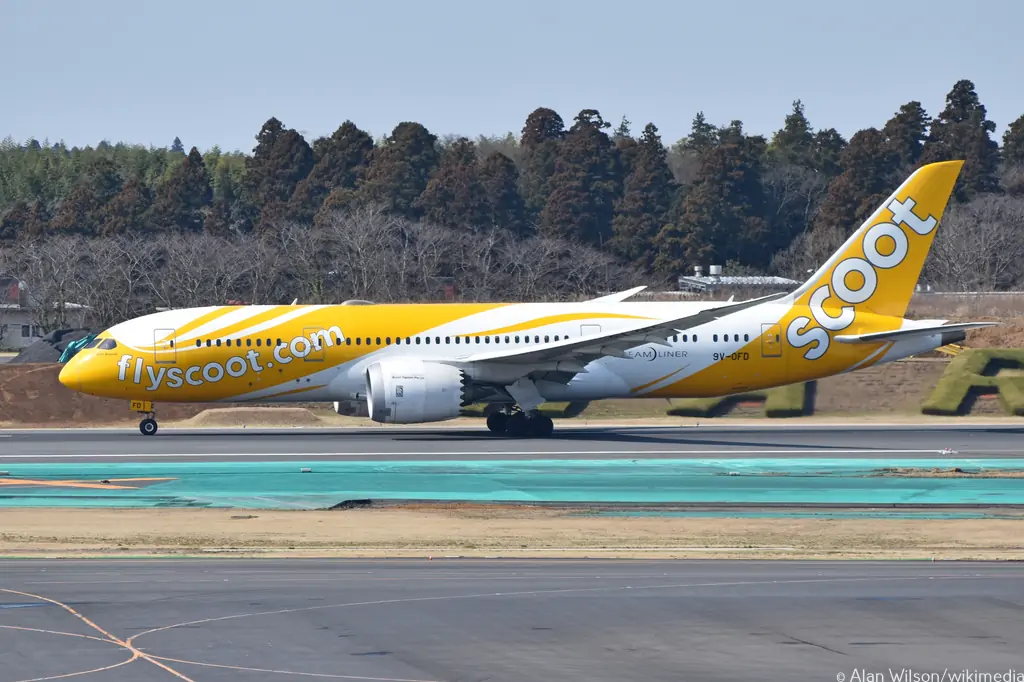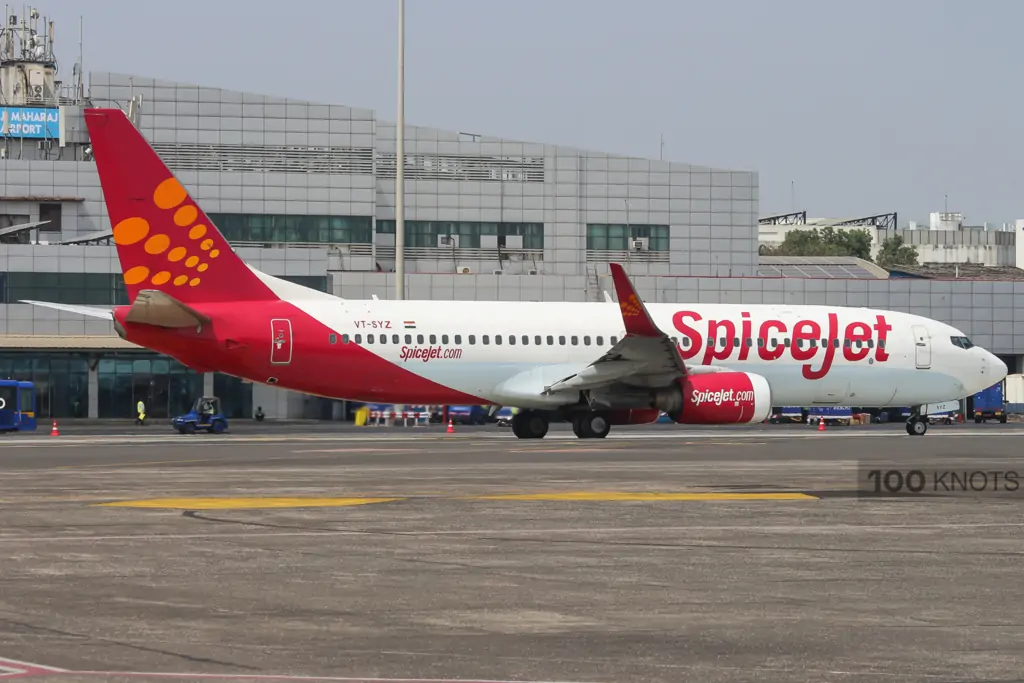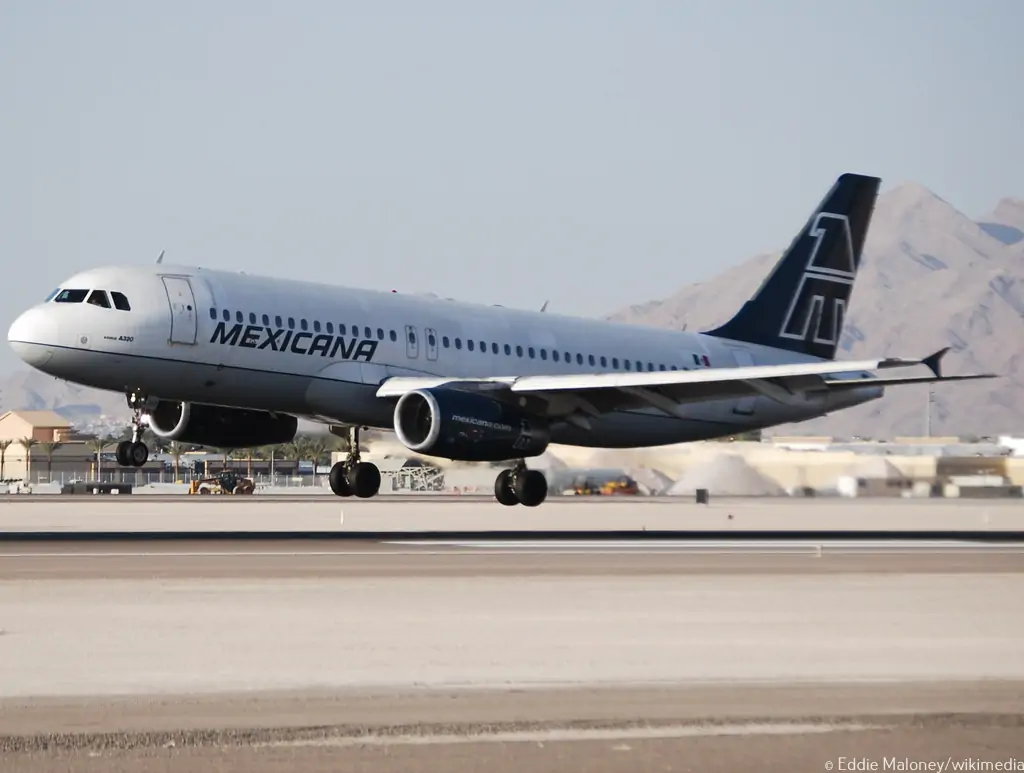China Southern Airlines, one of China's leading airlines, has just begun construction on a new base in Shenzhen. Shenzhen, located in Guangdong's southern province, borders the Special Administrative Region of Hong Kong, making it a perfect site for the airline's development goals. A ceremony was conducted on Friday, May 19th, 2023, to celebrate the start of construction, signaling a key milestone for both China Southern Airlines and the city of Shenzhen.
China Southern Airlines' History
China Southern Airlines is a prominent airline in the People's Republic of China. In terms of passenger counts and fleet size, it is the country's largest airline. The airline, headquartered in Guangzhou, has a considerable presence in both local and foreign markets. Its enormous network connects China to the rest of the globe via a diverse network of destinations.
Shenzhen: An Ideal Location
Shenzhen, a vibrant and ever-growing metropolis, provides China Southern Airlines with significant benefits. Because both cities are well connected by multiple kinds of transportation, including high-speed trains, ferries, and bridges, their closeness to Hong Kong provides abundant chances for further transportation. Shenzhen's status as a significant economic and technical centre in Southern China adds to its allure as a suitable home base for the airline.
Commencement of Construction
The start of the construction process on China Southern Airlines' new base in Shenzhen is a significant step forward in the airline's development goals. The celebration on May 19th, 2023, convened essential stakeholders and officials to commemorate this historic occasion. The building project is planned to last five years, demonstrating the airline's dedication to long-term growth and development.
Timeline and Investment for the Project
China Southern Airlines has made a significant investment in its new Shenzhen base. The airline is investing 2.4 billion yuan ($341 million) to construct a sophisticated and effective facility to fulfil the needs of its expanding operations. The project has a five-year timeframe, with phased construction and development to ensure a seamless transition and minimal disruption to the airline's operations.
Benefits of the New Base
China Southern Airlines is going to benefit from the development of a new base in Shenzhen in an array of aspects. For starters, it enables the airline to increase its operating capabilities and capacity to meet the region's expanding demand for air travel. The new base will serve as a solid basis for the airline to improve services and optimize operations, resulting in increased efficiency and customer satisfaction.
Increased Operational Capabilities
China Southern Airlines has the potential to significantly extend its operating capabilities with the establishment of a new base in Shenzhen. With additional capacity and resources, the airline can provide more flight options, frequencies, and destinations. This expansion improves connectivity for customers by allowing them to easily reach a broader selection of domestic and international destinations via the airline's substantial network.
Prospects for the Future and Growth Opportunities
The development of China Southern Airlines' new base in Shenzhen lays the groundwork for future chances and potential. The airline is well-positioned to meet rising demand for air travel thanks to increased operating capacity and greater connections. Shenzhen's strategic position allows the airline to enter expanding markets and explore new routes, supporting sustained expansion and prosperity.
Conclusion
The commencement of the construction process on China Southern Airlines' new base in Shenzhen marks an important milestone for both the carrier and the city. The significant investment and long-term ambition of the project demonstrate the airline's commitment to delivering great services and growing its operations. China Southern Airlines hopes that the new base will improve connectivity, increase economic growth, and give travelers seamless travel experiences throughout Southern China and beyond.
Read next
Uncertainty continues over the revival of grounded Jet Airways as the validity of the airline's air operator's certificate expired on Friday, May 19. There was no word from the Jalan Kalrock Consortium (JKC), which emerged as the winning bidder for the carrier under the insolvency resolution proceedings, on the airline’s flying permit status. The airline’s Air Operator’s Certificate (AOC), which has not flown since April 18, 2019, was revalidated on May 20 last year for a one-year period and the validity ended on Friday, May 19.
However, it could not be immediately ascertained whether the consortium has sought any relaxation from the aviation regulator DGCA with respect to the AOC, which is the most crucial requirement for operating an airline. A query sent to Ankit Jalan, a board member of the JKC, on whether the consortium has sought renewal of the AOC remained unanswered. The ownership transfer of Jet Airways to the JKC is yet to happen amid continuing differences with the lenders of the airline.
Jet Airways' Revival Plan
Debt-ridden Jet Airways, which flew for 25 years, shuttered operations on April 18, 2019. The insolvency resolution process of the carrier began in June 2019 and the National Company Law Tribunal (NCLT) approved a resolution plan submitted by the JKC in June 2021. Last week, the Consortium reportedly approached the NCLT asking it to grant more time to pay the creditors and implement the revival plan.
In January, the NCLT approved the transfer of Jet Airways’ ownership to JKC, stating that the conditions had been met. The tribunal set November 16, 2022, as the effective date for the resolution plan. Lenders of Jet Airways had approached the NCLAT, opposing the transfer of ownership to the consortium. They alleged that JKC had not fulfilled its obligations and argued against the ownership transfer.
Jet Airways was grounded in April 2019 due to substantial losses and approximately ?8,000 crore in debt. In October 2020, the airline’s Committee of Creditors approved the revival plan submitted by the Jalan-Kalrock consortium.
Furthermore, JKC's inability to fulfil certain AOC renewal criteria poses additional challenges. One of the major shortcomings is the consortium's lack of aircraft, a vital component for operating an airline. The absence of necessary pilots and cabin crew on the consortium's rolls further disqualifies JKC from eligibility for AOC renewal. Sources indicate that the two Boeing 737 aircraft that were leased by JKC have been reclaimed by the lessors, exacerbating the challenges faced by the consortium.
JKC missed the May 15 deadline to pay the first tranche to Jet Airways' creditors. Consequently, the consortium sought more time from the National Company Law Tribunal (NCLT) to fulfil its financial obligations. It is important to note that JKC does not yet have ownership of Jet Airways, further clouding the future prospects of the airline, and renewing this license won't be easy as the airline will have to convince the DGCA about its ability to fly which in Jet's case may not be possible as yet.
Sources also say that the Jet 2.0 team is almost deserted with no senior executive left in the airline after CEO-designate Sanjiv Kapoor quit last month. It has been nearly two years since the NCLT approved the resolution plan of Jalan-Kalrock but the airline is still far from taking off and hopes to see it in the skies again are only fading.
Airline in Loss
Meanwhile, a six-month time limit to make good on payment of INR 1.85 billion (USD22.4 million) to creditors also expired on May 14. There is no word from either camp that any payment was made. In January, the Mumbai bench of the National Company Law Tribunal (NCLT) ordered the payment within the defined timeframe. In exchange, the creditors would be required to issue the release certificate. In early May, Jet Airways filed another petition with the NCLT against creditors the State Bank of India, the Punjab National Bank, JC Flowers Asset Reconstruction (which acquired so-called "bad assets" from Jet Airways before its collapse), and Ashish Chhawchharia, the independent resolution professional on the Jet Airways management committee. A hearing is scheduled on June 6.
Separately, this week Jet Airways also reported a loss of INR 540 million for the quarter and year ended March 31, 2023, while its revenues for the quarter were INR124 million. The airline had reported a loss of INR 233.63 crore in the year-ago period. The company's revenue from operations for Q4FY23 rose by 12.5% to INR 12.4 crore as against INR 11 crore in Q4FY22. EBITDA stands negative at INR 18.76 crore in March 2023 up 90.17% from INR 190.76 crore in March 2022.
Jet Airways shares closed at 57.50 on May 17, 2023 (NSE) and have given -26.09% returns over the last 6 months and -45.00% over the last 12 months.
Read next
Scoot, a part of Singapore Airlines Group (SIA), has announced that eligible personnel will receive a six-month wage bonus. This great announcement follows the SIA group's exceptional financial performance for fiscal year 2022-23, which ended on March 31, 2023.
SIA Group's Financial Performance
The SIA group's most recent financial report for fiscal year 2022-23 exceeded expectations, disclosing record earnings of S$2.16 billion ($1.63 billion) earlier this week. This outstanding success may be ascribed to a number of factors, including excellent cost-cutting tactics, increased operational efficiency, and a recovery in global travel demand. The group's strong financial position has cleared the way for it to reward its personnel, ensuring they benefit from the success they helped create.
Scoot's Eligible Employees
The six-month wage bonus is available to eligible Scoot personnel, the SIA group's low-cost affiliate. Scoot's workforce includes pilots and cabin crew members, as well as ground personnel and administrative professionals. Scoot intends to acknowledge qualified personnel’s outstanding efforts and express its dedication to their well-being and pleasure by offering this incentive.
Current Scenario
SIA recorded a record profit of S$2.16 billion ($1.63 billion) earlier this week, which has been said to reverse the three prior years of losses. Scoot stated that the incentive was given in honor of the employees' devotion, hard work, and sacrifices, which helped the airline be successful and provide a solid foundation for the future.
Six-Month Salary Bonus
The six-month salary bonus is a significant award given to eligible Scoot personnel as a token of appreciation for their dedication and hard work. Employees will receive a big financial boost as a result of this incentive, which will provide them with more funds to support their personal and professional endeavors. Scoot intends to strengthen its credibility as an employer that values and invests in its personnel by distributing this incentive.
The Influence on Employee Morale and Satisfaction
The six-month wage bonus announcement is likely to have a significant beneficial impact on staff morale and satisfaction. This act of acknowledgment and gratitude may instill pride and loyalty in personnel, resulting in greater motivation and productivity. Employees who feel appreciated are more likely to be engaged and devoted to their jobs, which contributes to a healthy work environment and overall organizational success.
Talent Retention and Attraction
Attracting and maintaining the best personnel is critical for every organization's long-term growth and success in today's competitive labor market. Scoot's six-month wage bonus increases its appeal as a preferred employer, particularly in the aviation industry. This additional financial incentive can recruit competent staff members looking for attractive job possibilities while also serving as an effective retention tool for current employees.
Potential Challenges
While the six-month wage bonus is an important step towards increasing employee happiness, it may present some issues for the organization. Managing the financial consequences of such incentives, as well as ensuring equal distribution among qualified employees, might require careful preparation and execution. Furthermore, keeping consistency in employee awards and perks over time might be a difficulty that Scoot must solve.
Conclusion
The six-month wage bonus for eligible Scoot personnel is a significant step towards recognizing their contributions and improving their general well-being. This substantial reward not only enhances employee morale and happiness but also establishes Scoot as a preferred employer in the aviation sector. Scoot hopes to build a pleasant work culture, recruit top talent, and improve its reputation as a responsible and employee-centric organisation by investing in its workers.
With Inputs from CNA
Read next
The Directorate General of Civil Aviation (DGCA) has deregistered three planes of low-cost SpiceJet at the request of lessors, the latest in a string of troubles for the cash-strapped airline. Of the three, two were non-operational and its operations had not been affected, SpiceJet said on May 19.
Earlier this month, Lessors Wilmington Trust SP Services, Sabarmati Aviation Leasing and Falgu Aviation Leasing approached the civil aviation regulator, requesting the deregistration of three Boeing 737-800s over non-payment of dues. The DGCA deregistered the planes with call signs VT-MXJ, MXF and SZJ.
The move comes a few days after the no-frills airline had said it was taking steps to bring a part of its grounded fleet back in the air after rival Go First opted for voluntary insolvency. The airline also said it had no plans to file for insolvency even as several of SpiceJet’s aircraft remain grounded due to various reasons.
"Out of the five planes listed for deregistration, one lessor has already requested DGCA to suspend the deregistration of two aircraft. Out of the remaining three, two were grounded for a long period and not operational. Hence, there is no impact on our operations. We remain focussed on bringing on our grounded fleet back into operations," a SpiceJet spokesperson said.
SpiceJet is facing insolvency resolution proceedings over the non-payment of dues amounting to INR 40 crore for four B737-800s. The National Company Law Tribunal (NCLT) has issued a notice to the airline and the hearing is slated for May 25.
The Gurugram-based airline is also caught in a legal wrangle with Credit Suisse, which moved a contempt of court petition in the Supreme Court. The court has given SpiceJet time till July 18 to pay Credit Suisse USD 24 million, which the Swiss firm is seeking for servicing of aircraft engines and components in 2013.
A few months ago, Carlyle Aviation converted its USD 100 million dues into equity and acquired compulsorily convertible debentures in SpiceXpress, the airline’s cargo arm, giving it a 7.5% stake.
SpiceJet owes Aircastle around $6 million. The NCLT asked SpiceJet to file a response to the plea and explore options for settlement. The tribunal has listed the insolvency plea against SpiceJet on May 25. The airline said earlier that it has no plans to file for insolvency. The SpiceJet statement added: "Our lessors have supported us through thick and thin and continue to do so and we are grateful for their support and confidence".
According to an aircraft tracking website, SpiceJet had 67 aircraft in its fleet comprising Boeing 737s, B737 Max and Bombardier-Q400s. Out of these, only 37 were in operation as on May 3. As of date, approximately 27 aircraft out of its fleet of 61 aircraft are grounded due to financial issues and need of spare parts, as per data from flight tracking website flightradar24.
The carrier has been in talks with lessors, investors and lenders in India and abroad for renegotiating contracts, raising funds, and restructuring.
In January 2020, SpiceJet’s domestic market share was at 16.6%, with a fleet size of 119. This fell to 7.3% in January 2023 with a fleet size of 65 jets; however, only 34 of its planes are currently operational. The market size of the airline has further reduced to 5.8% as per April data from DGCA.
SpiceJet CMD Ajay Singh had recently ruled out filing for insolvency. “There is absolutely no question of filing for insolvency,” he had said. The past few months have seen some lessors filing applications with DGCA to repossess their planes from the airline. “We have a great relationship with all our partners. Our lessors have supported us through thick and thin and continue to do so and we are grateful for their support,” Ajay Singh had said.
The deregistering of SpiceJet’s planes is the latest turbulence to hit the Indian aviation sector. Jet Airways bid to fly again has jolted to a halt, Go First has been granted bankruptcy protection but faces uncertainty and SpiceJet continues to face lessors’ wrath.
On May 19, the stock closed 1.08% down from the previous close at INR 29.23.
Read next
American Airlines Reach an Agreement with Pilots and Increase Pay by 21% in Tentative Contract
Abhishek Nayar
20 May 2023

American Airlines pilots recently achieved a significant milestone in their ongoing negotiations regarding contracts with the carrier. According to sources, the pilots have agreed in principle to a new four-year tentative contract that will significantly increase their compensation. This development comes at a critical juncture, just before the peak summer travel season, and is anticipated to have profound implications for both pilots and passengers.
Negotiations with American Airlines
American Airlines and its pilots have been negotiating for several years. These discussions focused on an array of issues, including wages, working conditions, and career advancement. Finding a mutually advantageous arrangement has been difficult due to the complexity of the aviation sector and the airline's financial considerations.
Present Situation
The aviation industry is heavily reliant on qualified pilots to maintain safe and efficient aircraft operations. As one of the leading airlines in the United States, American Airlines understands the importance of attracting and maintaining outstanding pilots. Pilot compensation is of the utmost importance in this endeavor since it significantly impacts job satisfaction and the airline's ability to compete in the labor market. After years of discussions with the largest U.S. airline, American Airlines pilots have agreed in principle on an agreement that increases their compensation by 21% in 2023 as part of a new four-year tentative contract, according to sources on Friday, ahead of a busy summer travel season.
Details of the Agreement
The recently signed four-year tentative agreement is a significant step forward in the discussions. The upsurge is likely to significantly increase pilots' wages, reflecting the value they offer to the airline. According to three people with intimate knowledge of the subject, American pilots would receive a 21% pay increase in 2023, a 5% pay increase the next year, and a 4% pay increase the following two years under the proposed agreement. Pilots would also receive a 3% raise when the proposed contract becomes amendable in 2027, according to the individuals, who spoke on the condition of anonymity because the specifics are not yet public. American's contract includes schedule enhancements, which they say are crucial for pilots seeking a better work-life balance in a job that frequently requires them to be away from their families for days at a time.
The Impact on Pilots
Pilots are likely to benefit from the higher remuneration package. Aside from the obvious financial advantages, increased revenue may enhance job satisfaction and morale among the pilot personnel. Pilots who feel respected and suitably compensated for their expertise and responsibilities are more likely to be motivated and devoted to their job. Furthermore, the new contract might have an impact on pilot retention and recruitment. American Airlines is portraying itself as an enticing alternative for pilots seeking stability and fair remuneration by offering competitive wages and attractive perks. This might result in a larger talent pool, ensuring the airline has a consistent supply of experienced pilots in the long run.
Passenger Experience
The influence of the agreement on the passenger experience is an essential concern. Well-compensated pilots are more likely to be motivated and focused on their duties, which contributes to improved flight safety. With the hectic summer travel season approaching, maintaining strong service standards is critical. The agreement's favorable impact on pilot morale may result in a more pleasant and delightful experience for passengers.
Implications for Industry
The pilots' agreement with American Airlines establishes a significant precedent in the aviation sector. Other airlines and their pilots will keenly examine the contract's evolution and possible incentives. It may promote similar negotiations between pilots and management in other companies, potentially resulting in improved wages and working conditions throughout the industry. The agreement also emphasizes the need to maintain positive labor-management partnerships in the aviation industry. Airlines and pilots may build mutually advantageous contracts that accommodate the changing demands of both sides by working together and finding common ground.
Conclusion
With their new compensation agreement, American Airlines pilots have reached a critical milestone after years of discussions. As part of the four-year tentative agreement, the airline will enhance pilot remuneration by 21% in 2023, demonstrating the airline's acknowledgment of the pilots' critical position and the value they offer to the company. This agreement is likely beneficial for pilots, passengers, and the aviation industry as a whole.
With Inputs from Reuters
Read next
The Mexican aviation industry has always been dynamic, with a mix of national and international carriers meeting the country's expanding need for air travel. The Mexican Secretariat of Finance and Credit Public has approved the formation of a new state carrier, Aerolínea del Estado Mexicano, in a significant milestone. This decision is anticipated to impact Mexico's aviation sector's future and create new prospects for both travellers and the economy. The airline's commercial name will most likely be Mexicana de Aviación.
The History of the Mexican Aviation Industry
Mexico has a flourishing aviation industry, with numerous major airlines based there. Air travel demand has continuously grown in recent years, owing to reasons such as economic expansion, tourism, and corporate activity. Existing national and international carriers have played an important role in linking various places within Mexico and easing international travel. However, there is a need for a new player who can fill certain market gaps while also serving the interests of the state.
Present Scenario
In Mexico, the government's attempt to build a new state carrier is still ongoing. The Secretariat of Finance and Credit Public of the government approved the development of a state startup capable of operating scheduled passenger flights in both domestic and international markets. In accordance with details released on Thursday, the Mexican Army would control 99% of the new company's shares, with the Army's National Bank owning the remaining 1%. The new carrier will cost both parties 1 million pesos ($56,000).
The Requirement for a New State Carrier
Aerolínea del Estado Mexicano was founded on the understanding that a state-owned airline may play an important role in supporting the country's aviation infrastructure, economic growth, and regional connections. The government intends to improve access to underserved locations, encourage tourism, and increase domestic travel. By establishing a state carrier, Mexico may gain more control over its air transportation network while still encouraging healthy market competition.
Mexicana de Aviación: A Renowned Commercial Name
While the new state carrier's official name is Aerolínea del Estado Mexicano, it is intended to operate under the commercial name Mexicana de Aviación. Mexicana de Aviación was previously the country's premier carrier; hence, it has historical significance in the Mexican aviation industry. By adopting this well-known moniker, the new state carrier hopes to pay respect to its predecessor while also embracing a new beginning.
Potential Implications for the Mexican Aviation Market
Aerolínea del Estado Mexicano, also known as Mexicana de Aviación, is projected to have a substantial influence on the Mexican aviation business. The introduction of a state carrier may result in better competition, higher service quality, and more alternatives for travellers. Existing airlines will almost certainly experience more competition and may need to improve their offers in order to maintain their market share. This advancement may also spur industrial innovation and the launch of new technology.
The Benefits and Drawbacks of a State Carrier
A state-owned airline carries with it a variety of advantages and disadvantages. On the plus side, it allows the government to have a say in strategic choices, prioritise public interest, and assure the availability of critical air services in underserved areas. A state carrier can also help to create jobs, support economic growth, and promote tourism. However, for long-term success, difficulties like operational efficiency, financial sustainability, and retaining competitiveness must be addressed.
Comparison with Existing Mexican Airlines
As Aerolínea del Estado Mexicano enters the market, comparisons to incumbent carriers are unavoidable. Established national and international carriers in Mexico have built up their presence and dedicated client bases. The new state carrier must distinguish itself through competitive pricing, service quality, route networks, and the customer experience. Mexicana de Aviación can carve out a niche and attract a varied spectrum of travellers by utilizing its unique status as a government-backed entity.
Expectations and Experiences of Customers
Customer expectations are critical to establishing an airline's performance in an increasingly competitive aviation industry. From the ticket process to boarding and in-flight amenities, passengers expect a smooth and pleasurable experience. Aerolínea del Estado Mexicano must prioritize client satisfaction by providing personalized services, straightforward booking systems, capacious cabins, and on-time performance. The new state carrier may establish a loyal client base by continually fulfilling and surpassing consumer expectations.
Routes and Destinations that Could Be Explored
The new state carrier should establish routes and locations that are strategically aligned with the country's economic growth ambitions, tourist goals, and passenger demand. Aerolínea del Estado Mexicano can aid in the development of regional economies and increase tourist income by linking underserved communities, increasing internal travel, and developing international linkages. Finding lucrative routes and entering new markets will be critical to the airline's success.
Economic Growth and the Creation of Employment
Aerolínea del Estado Mexicano's establishment has the ability to provide jobs and economic prosperity. The airline will need a diversified workforce, including pilots and cabin crew, ground crew, maintenance professionals, and administrative personnel. By creating job opportunities, the state carrier may help reduce unemployment, improve living standards, and stimulate economic activity in the aviation and allied industries.
Environmental and Sustainability Considerations
Aerolínea del Estado Mexicano should prioritize environmental concerns in its operations as the aviation industry strives for sustainability. Investing in fuel-efficient aircraft, implementing environmentally friendly practices, and investigating alternative energy sources can all help lower the airline's carbon footprint. The state carrier may attract environmentally aware travellers and contribute to Mexico's broader sustainability goals by displaying a commitment to environmental responsibility.
Conclusion
The approval of Aerolínea del Estado Mexicano is a significant step forward in the Mexican aviation industry. The new state carrier, which will be known commercially as Mexicana de Aviación, has the ability to alter the industry, boost connectivity, and stimulate economic growth. Mexicana de Aviación can position itself as an important participant in the sector by concentrating on customer satisfaction, competitiveness, and sustainability, delivering dependable air travel services, and contributing to Mexico's overall growth.







Comment